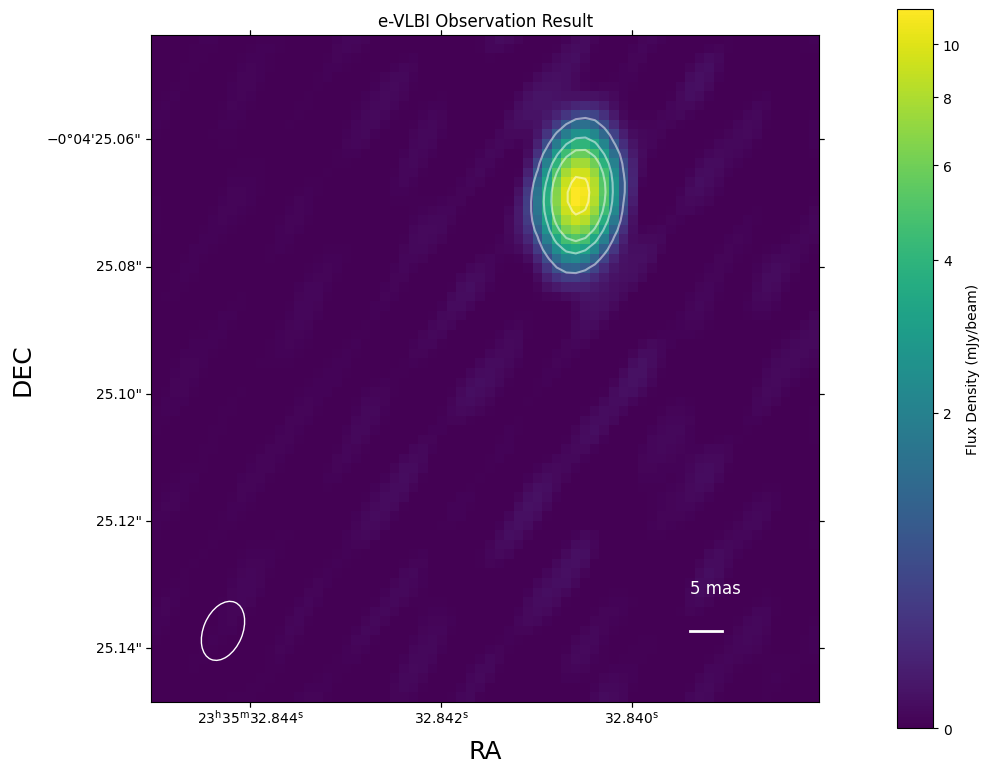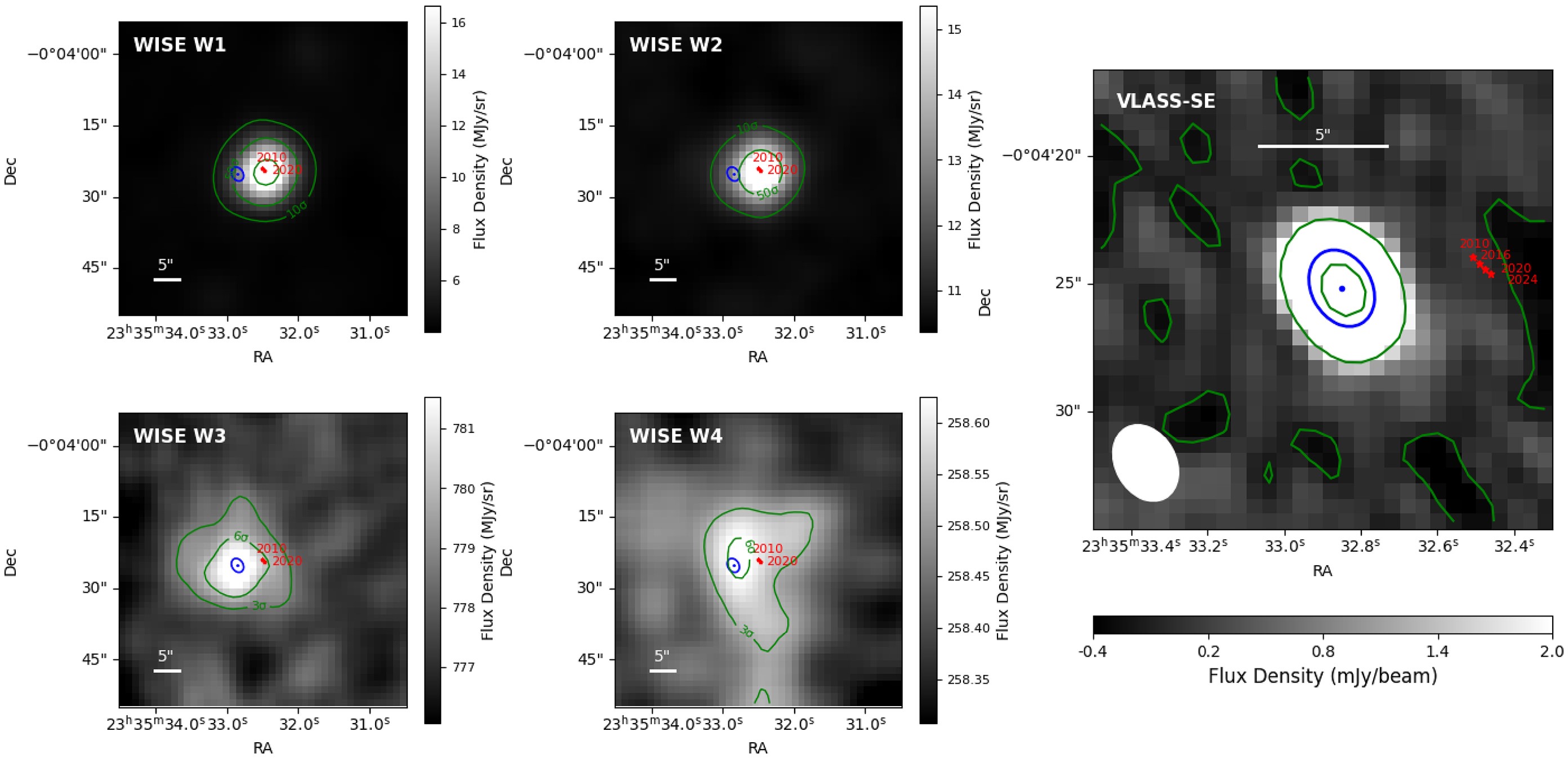
High-resolution EVN (e-VLBI) observations revealed the core of the AGN which contaminates a Dyson Sphere candidate star’s mid-infrared emission.
Tongtian Ren
By using Gaia, 2MASS, and ALLWISE measurements, Project Hephaistos identified seven Dyson Sphere candidate stars from 5 million sources [1]. However, the follow-up identification by Tongtian Ren, Michael Garrett, and Andrew Siemion, a group of SETI researchers, found that three of these candidates exhibit radio emission detected in multiple archival radio surveys (Figure 1), suggesting that these sources may be contaminated by hot, dust-obscured galaxies (hot DOGs) [2].

Figure 1. The positions of the radio sources associated with Dyson Sphere candidate stars A, B, and G. The Gaia coordinates of these stars define the centre of each field.
To verify this hypothesis, Ren, Garrett and Siemion conducted EVN (e-VLBI) and e-MERLIN radio observations of J2335-0004, the brightest radio source associated with candidate star G in June 2024. The EVN (e-VLBI) observations show that the central component (Figure 2) has a brightness temperature exceeding 108 K, and radio emission was not detected at the star's position. These EVN results provided the key evidence that support their AGN hypothesis [3]. The e-MERLIN imaging results also captured this component, as well as two other components belonging to the jets.

Figure 2. High-resolution EVN (e-VLBI) image of J2335−0004. The AGN’s core is depicted at the milliarcsecond spatial resolution.
Additional analysis of archival ALLWISE and VLA-SE data (Figure 3) reveals that the 12 and 22 µm mid-infrared emissions—previously attributed to a Dyson Sphere—are actually dominated by this AGN [3]. Furthermore, the WISE 3.4 and 4.6 µm dropout suggests that this AGN should be a hot DOG galaxy, as the authors initially hypothesised [2]. These findings underscore the importance of VLBI in identifying the true nature of anomalous astrophysical data.

Figure 3. The WISE and VLASS-SE images of J2335−0004. The right panel shows the VLASS-SE image. The FWHM and centroid, derived from the VLASS-SE image, are shown as blue ellipses and dots in all five panels. The four left panels showcase four WISE bands’ images of the source. The star’s locations are shown as red star markers in all the panels.
References:
[1] Suazo et al. "Project Hephaistos–II. Dyson sphere candidates from Gaia DR3, 2MASS, and WISE." Monthly Notices of the Royal Astronomical Society 531.1 (2024): 695-707.
[2] Ren, Garrett, and Siemion. "Background Contamination of the Project Hephaistos Dyson Spheres Candidates." RNAAS 8.5 (2024): 145.
[3] Ren, Garrett, and Siemion. "High-resolution imaging of the radio source associated with Project Hephaistos Dyson Sphere Candidate G." MNRAS Letters 538.1 (2025): L56-L61.
Link to the paper:
Contact:
Tongtian Ren, PhD student, Jodrell Bank Centre for Astrophysics, University of Manchester, UK. Email: tongtian.ren@manchester.ac.uk
Michael A. Garrett, Sir Bernard Lovell Chair of Astrophysics, Jodrell Bank Centre for Astrophysics, University of Manchester, UK. Email: michael.garrett@manchester.ac.uk